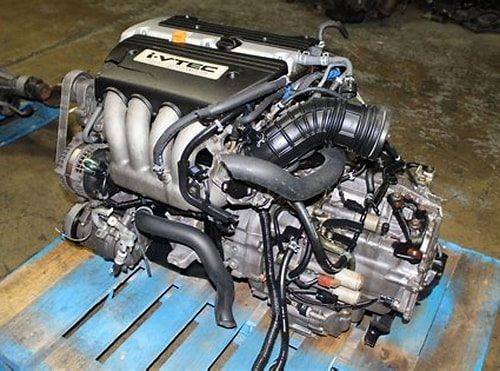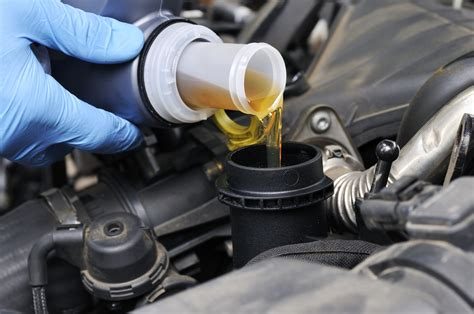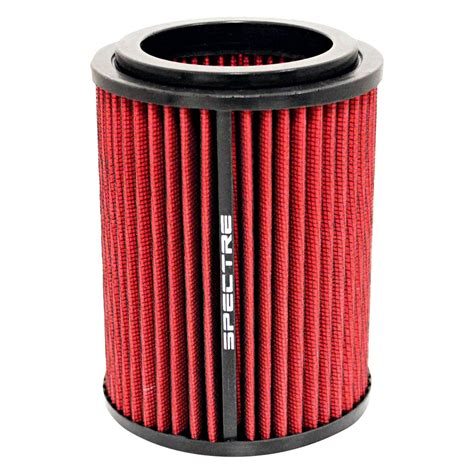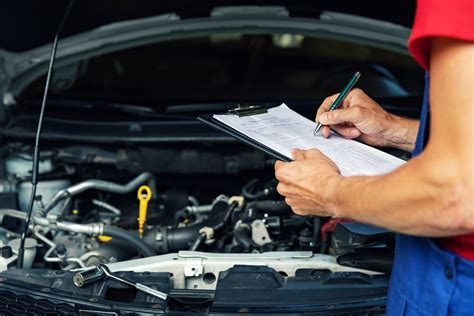Understanding Code P0420 and Its Causes
One of the most common issues that Honda Accord owners face is the appearance of the check engine light on the dashboard. When this light comes on, it indicates that there is some problem with the engine that requires attention. Among the many error codes that could trigger the check engine light, one of the most persistent is code P0420. This code indicates that there is a problem with the catalytic converter and could prevent you from passing an emissions test.
The catalytic converter is one of the most critical components in your car’s exhaust system. Its primary function is to convert harmful pollutants in the exhaust gases into harmless compounds that can be safely released into the environment. The P0420 code indicates that the catalytic converter is not functioning correctly, or it is not meeting its expected efficiency level.
There are several reasons why your Honda Accord could trigger error code P0420. Some of the common culprits include:
- Faulty Catalytic Converter – It is possible that the problem is with the catalytic converter itself. Over time, the converter can clog, break down or corrode due to exposure to excessive heat, contaminants in the exhaust or poor engine performance.
- Defective O2 Sensors – There are two oxygen sensors, one upstream and one downstream, in the exhaust system. These sensors determine the amount of oxygen in the exhaust and send information to the engine control module (ECM). If one or both of the sensors are defective, it can cause the ECM to trigger the P0420 code.
- Exhaust Leaks – Exhaust leaks can cause the catalytic converter to malfunction. If there is a leak in the exhaust system, it can cause the engine to receive too much air, which can lead to higher emissions and a drop in fuel efficiency.
- Faulty ECM – The Engine Control Module (ECM) is responsible for monitoring and regulating all the systems in your car. If the ECM is malfunctioning, it can send a false signal warning that there is a problem with the catalytic converter.
If you notice a check engine light and receive the P0420 code, the first step is to take your Honda Accord to a licensed mechanic or authorized dealership to perform a diagnostic test. Once the technician has run a full diagnostic test, they will be able to identify the issue underlying the code. Correctly diagnosing the problem is critical because it will help ensure that the correct solution is identified.
The most common way to fix the P0420 code is to replace the catalytic converter. The replacement part is usually expensive, and the labor costs to replace it can add up, depending on the complexity of the repair. However, in some cases, repairing the exhaust system, replacing O2 sensors or the ECM may be enough to fix the problem. As a general rule, it is best to rely on a trusted mechanic or dealership to diagnose and fix the problem to ensure that it is done correctly.
In conclusion, code P0420 is a common problem that can plague your Honda Accord. While it is frustrating, it is essential to take the time to diagnose the issue correctly to avoid further problems and keep your car running smoothly. If you suspect that you have this code, don’t hesitate to take your car to a trusted mechanic or a licensed dealership for a full diagnostic test and repair.
Inspection of Exhaust System Components
One of the common causes of code p0420 in a Honda Accord is a faulty oxygen sensor. To diagnose this problem, it is important to inspect the exhaust system components.
The first thing to check is the oxygen sensor itself. The oxygen sensor is a crucial component of the exhaust system that monitors the amount of oxygen in the exhaust gases. A faulty oxygen sensor can cause the engine to run inefficiently, resulting in increased emissions and reduced fuel economy.
To check the oxygen sensor, use a code scanner to read the diagnostic trouble code. If the code indicates a problem with the oxygen sensor, use a multimeter to test the sensor’s voltage and resistance. If the voltage and resistance readings are outside the recommended range, replace the oxygen sensor.
The next component to inspect is the catalytic converter. The catalytic converter is responsible for converting harmful gases into less harmful ones before they exit the exhaust system. If the catalytic converter is faulty, it can lead to increased emissions, decreased fuel economy, and even engine damage.
To inspect the catalytic converter, start the engine and let it run for a few minutes. Then, use an infrared thermometer to measure the temperature of the inlet and outlet of the converter. The temperature difference should be at least 100°F. If the temperature difference is less than 100°F, it’s likely that the catalytic converter is clogged and needs to be replaced.
The final component to inspect is the exhaust manifold. The exhaust manifold collects the exhaust gas from the engine and transfers it to the catalytic converter. If the exhaust manifold is cracked or leaking, it can allow unfiltered air into the exhaust system, which can cause the oxygen sensor to malfunction.
To inspect the exhaust manifold, visually inspect it for cracks or leaks. If there are any visible cracks or leaks, replace the exhaust manifold.
In conclusion, the inspection of exhaust system components is an essential part of diagnosing and fixing code p0420 in a Honda Accord. By inspecting the oxygen sensor, catalytic converter, and exhaust manifold, you can identify and repair any faults that may be causing the engine to run inefficiently and producing excessive emissions.
How to Clean or Replace a Faulty Catalytic Converter
If you are experiencing code P0420 in your Honda Accord, chances are it could be due to a faulty catalytic converter. The catalytic converter is an important part of your car’s emission system, and it helps reduce the harmful emissions that come from your car. When it’s faulty, it can cause several issues that can make your car run less efficiently and can damage other parts as well.
If your car has a faulty catalytic converter, you have two options: cleaning or replacement. However, before you make the decision, it’s important to understand what caused the issue so that you can address it adequately. Here’s what you need to know.
Contents
- 1 Cleaning Your Catalytic Converter
- 2 Replacing Your Catalytic Converter
- 3 Preventing Future Issues
- 4 1. Use high-quality fuel and regularly change your engine oil
- 5 2. Regularly check and replace your air filters
- 6 3. Take your car for regular maintenance check-ups
- 7 4. Remove potential sources of engine damage
- 8 5. Be mindful of your driving and maintenance habits
- 9 In conclusion
Cleaning Your Catalytic Converter
Cleaning your catalytic converter is an option if the problem seems minor. There are different methods you can use to get rid of the buildup. One of the most popular methods is using a catalytic converter cleaner. This is a fuel additive that you pour into your gas tank. The cleaner will run through your system and clean out the buildup in your catalytic converter.
Another method is using a catalytic converter cleaner spray. This method involves spraying the cleaner directly into the catalytic converter. The cleaner will break down the buildup, and you should notice a smoother running engine. Before using this method, make sure you read the instructions carefully.
If those methods don’t work, you can try a mechanical cleaning. This process involves removing the catalytic converter and manually removing the buildup with a scraper or cleaning tool. This method is more complicated and should only be done by an experienced mechanic.
Replacing Your Catalytic Converter
If your catalytic converter is severely damaged or blocked, cleaning may not be an option. In that case, your only option is to replace it. You should note that catalytic converters are not cheap, and you should only source them from reliable suppliers.
A professional mechanic should replace your catalytic converter. They will remove the old one and weld the new one in its place. After the replacement, you should notice an improvement in your car’s performance and a significant reduction in emissions.
Preventing Future Issues
After cleaning or replacing your catalytic converter, the next step is to take measures to prevent future buildups. You can do this by ensuring you use the right fuel, handling your car gently, and regular maintenance of the car’s engine. With proper care, your catalytic converter should serve you well for a long time.
Resetting the Check Engine Light After Fixing Code P0420
After fixing code P0420 on your Honda Accord, it is essential to reset the check engine light to ensure that the issue is no longer detected by the onboard computer. The check engine light is part of your vehicle’s onboard diagnostics (OBD) system, which monitors and detects various engine-related problems. When the OBD system detects a problem, it illuminates the check engine light on the dashboard to alert you of the issue.
Resetting the check engine light after fixing code P0420 is a relatively simple process that you can perform on your Honda Accord. However, it is important to note that resetting the light will not fix the underlying problem that caused it to come on in the first place. It is crucial to fix the root cause of the problem to prevent the check engine light from coming back on.
Here are the steps to reset the check engine light after fixing code P0420 on your Honda Accord:
Step 1: Turn off the ignition.
Before attempting to reset the check engine light, make sure the ignition is turned off. It is recommended to wait a few minutes before attempting to reset the light, as this will give the onboard computer time to clear any stored codes.
Step 2: Locate the OBD-II port.
The OBD-II port is usually located underneath the dash near the steering column. It is a small rectangular-shaped connector with a cover on it. Remove the cover to access the port.
Step 3: Connect the OBD-II code reader.
Connect the OBD-II code reader to the OBD-II port on your Honda Accord. The code reader should automatically establish a connection with the onboard computer.
Step 4: Clear the codes.
Using the code reader, clear the codes stored in the onboard computer’s memory. Follow the instructions provided by the code reader to clear the codes. Once the codes are cleared, the check engine light should turn off.
Step 5: Turn on the ignition.
Turn on the ignition and check the dashboard to see if the check engine light has been reset. If the light is off, the reset was successful.
Step 6: Test drive your Honda Accord.
Take your Honda Accord for a test drive to make sure that the check engine light does not come back on. If the light comes back on, it means that the underlying problem has not been fixed, and you will need to diagnose the problem further.
Resetting the check engine light after fixing code P0420 on your Honda Accord is a simple process that you can perform yourself. However, it is important to remember that resetting the light does not fix the underlying problem. If the light comes back on, it means that there is still an issue with your vehicle that needs to be resolved.
Tips for Preventing Future P0420 Error Codes

If you have recently experienced the dreaded P0420 error code with your Honda Accord, then you understand the frustration and anxiety that comes along with it. Not knowing how to fix the issue can leave you feeling helpless. However, by understanding the causes of this error code, you can take proactive measures to avoid it from happening again.
1. Use high-quality fuel and regularly change your engine oil

Using high-quality fuel is essential for keeping your car’s engine running smoothly. It’s also vital to regularly change your engine oil. Old and dirty engine oil can cause a buildup of harmful substances in your car’s engine, leading to deterioration and ultimately, the P0420 error code.
2. Regularly check and replace your air filters

Air filters are important for preventing debris and other particles from entering your car’s engine and causing damage. Regularly checking and replacing your air filters will help ensure that your car’s engine continues to run smoothly and efficiently, reducing the likelihood of experiencing a P0420 error code.
3. Take your car for regular maintenance check-ups

Taking your car for regular maintenance check-ups is important for identifying and fixing any issues before they turn into more significant problems. It’s essential to take note of any warning signs your car may be experiencing, not just when the P0420 error code comes up. Don’t be afraid to be proactive with your car’s maintenance.
4. Remove potential sources of engine damage

It’s crucial to remove any potential sources of engine damage to prevent experiencing the P0420 error code. For example, ensuring that all parts and components are functioning correctly, and removing any debris or particles that may have entered the engine. Regularly washing the engine bay of any dirt or debris can also help reduce the likelihood of engine issues.
5. Be mindful of your driving and maintenance habits

Your driving and maintenance habits can impact your car’s performance and overall health. For example, driving your car too hard or aggressively can cause unnecessary wear and tear on the engine, leading to issues like the P0420 error code. Additionally, failing to maintain your car regularly can cause a buildup of grime and debris in your engine, reducing its efficiency and increasing the likelihood of experiencing engine issues. Being mindful of your driving and maintenance habits can make a significant difference in preventing future P0420 error codes.
In conclusion
Experiencing the P0420 error code with your Honda Accord can be frustrating, but by following these tips, you can take proactive measures to prevent this issue from occurring in the future. By using high-quality fuel, regularly checking and replacing air filters, taking your car for maintenance check-ups, removing potential sources of engine damage, and being mindful of your driving and maintenance habits, you can keep your car running smoothly and avoid the dreaded P0420 error code.
